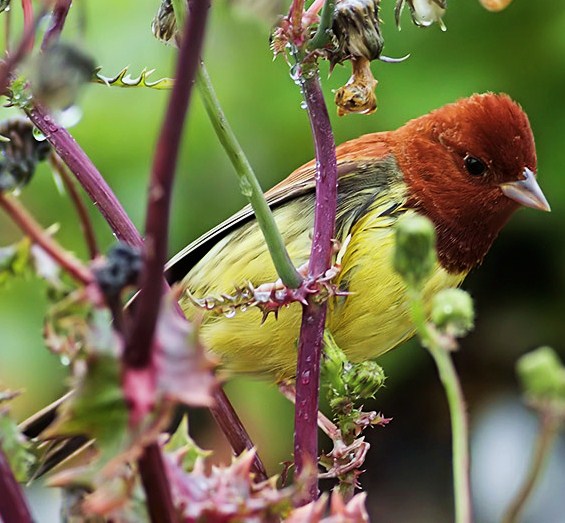Emberiza rutila
 |
| Photo by Tim Edelsten (Birds Korea) |
Common name:
chestnut bunting (en); escrevedeira-ferrugínea (pt); bruant roux (fr); semillerito castaño (es); rötelammer (de)
Taxonomy:
Order Passeriformes
Family Emberizidae
Range:
The chestnut bunting is found in eastern Asia, breeding in Siberia, northern Mongolia and north-eastern China, and migrating south to winter in in southern China, Indochina and Burma.
Size:
These birds are 14-15 cm long and have a wingspan of 21-23 cm. They weigh 15-19 g.
Habitat:
They breed in temperate and boreal broad-leaved forests dominated by larch, alder and birch, apparently favouring are of open forest with rich ground-cover of herbaceous plants, and dense grass. During migration and winter they use a wide range of habitats including mountain slopes and lake shores, agricultural fields,gardens near villages, rice stubbles, scrublands and forest clearings.
Diet:
Chestnut buntings feed mostly on seeds, but will also hunt insects during the breeding season.
Breeding:
These birds breed on the ground, in an open cup made of twigs, rootlets and other plant materials. there the female lays 3-5 eggs which are incubated for 10-14 days. The chicks are reared by both parents and fledge 10-15 after hatching.
Conservation:
IUCN status – LC (Least concern)
This species has a large breeding range and is described as locally fairly common or common. The population is suspected to be stable in the absence of evidence for any declines or substantial threats.







